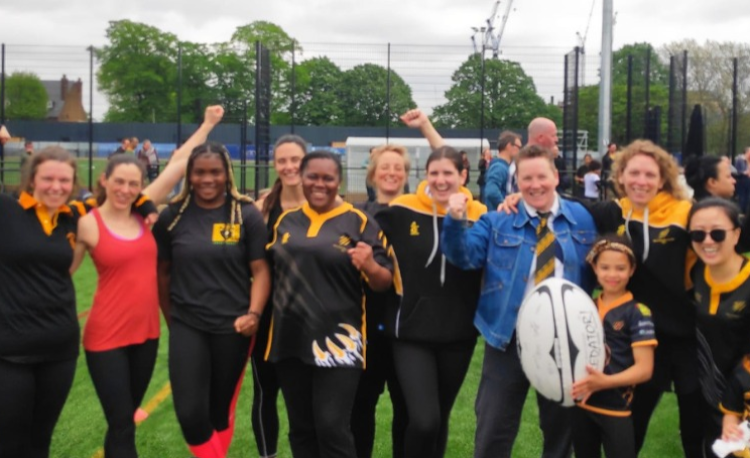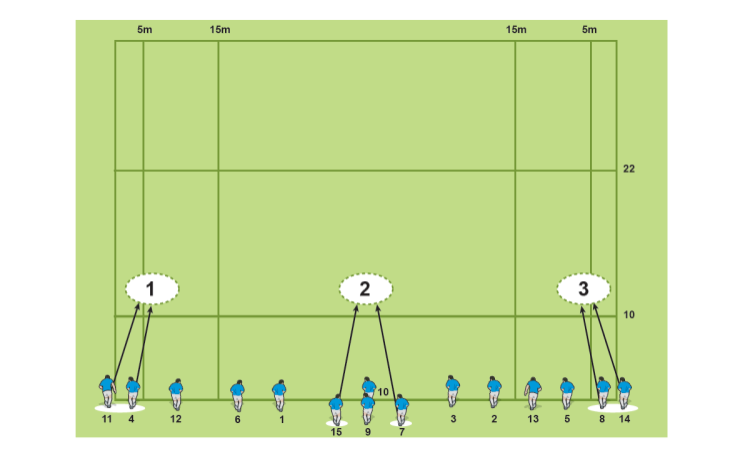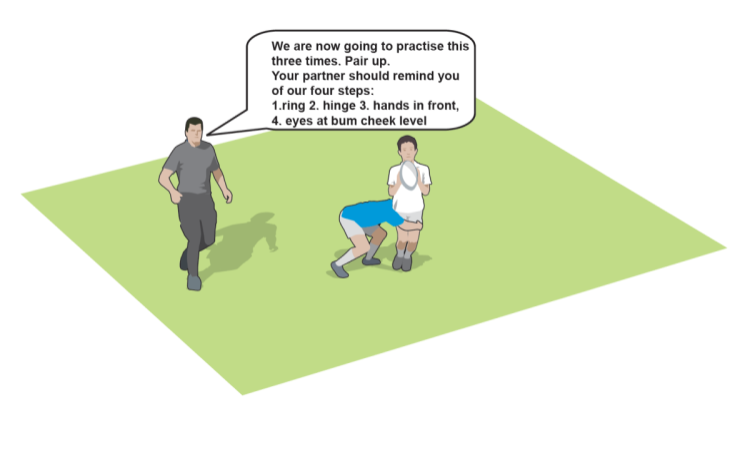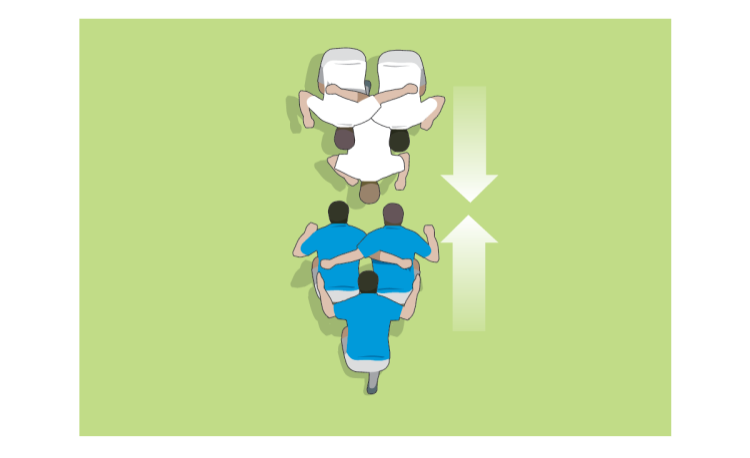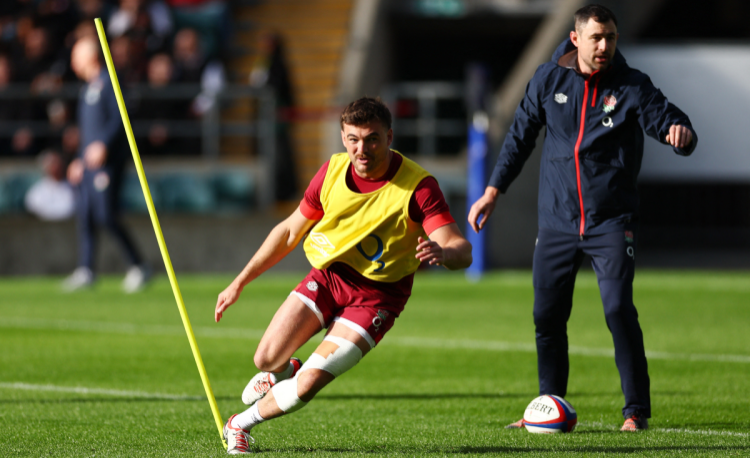You are viewing
1 of your 2 free articles
How I kick queues into touch
If we want to maximise learning and engagement for players, we need to kick queues to touch and offer them a practice environment that will capture their imagination and help them improve as rugby players. But how do you coach without queues?
Games are a great way to engage all players in a fun way. Kids (and adults) have an innate love of play, so let’s ‘play’ to that. Games are also a great way to replicate the context of a match.
The more time we spend practising in context, the greater the transfer of learning into matches, which is what we all want no doubt? Games are a great learning tool, although it can be a challenge to design games that work. Consider this process around the game of Link Touch.
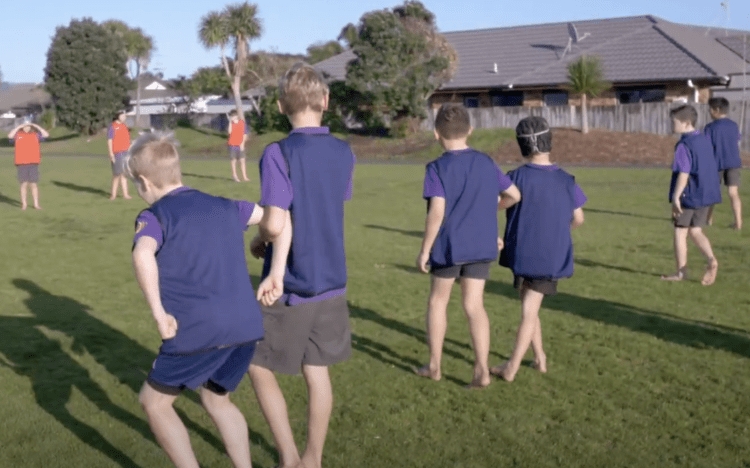
Purpose
Be clear on the purpose. Link touch is where attacking players see and attack space in the defensive line.
Design
Consider pitch spaces, rule, constraints to achieve the purpose.
Space: 30m x 20m
Rules: Keep it simple – one or two rules to get it started.
When a defender touches the ball-carrier, they must link arms with the nearest defender. They are now joined as a pair and must defend as a linked pair. This will create more space for the attacking team. Turn over ball once a try is scored or if attacking team makes a mistake (such as a knock-on or forward pass).
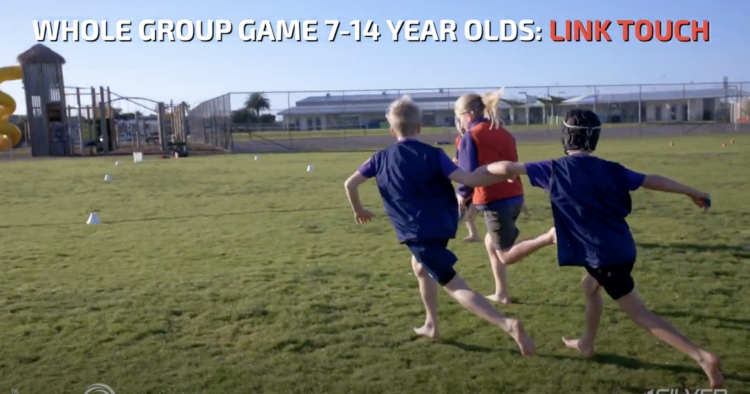
Just get them playing. There will be mistakes while they work the game out. Be patient, they will get there if your game is simple enough.
Questioning
Questions to link back to the purpose. For example: ‘How can we make more line breaks?’
Adaption of Design
Adapt the design to make it harder if they are having a lot of success, or easier if they are struggling to execute.
If you are going to use activities / drills (5 press-ups for saying drills), then group your players according to the number of players required to perform the skill.
For example: 2 v 1 attacking skills requires a ball carrier, support player and defender, so groups of three.
2 v 1

Purpose
Attackers to utilise and execute 2 v 1 opportunities.
Design
Space: 5m x 5m square
Rules: Two attackers play against one defender and attempt to score a try. If they score, they stay on attack. If the defender can stop them from scoring, the defender swaps with an attacking player.
Aim to make it continuous. For example, as soon as the defender touches their line, they can defend (so attempting to catch the attackers off-guard).
Players work in 3s with multiple 5mx5m squares set up.
The coach can then provide feedback through questions or demonstrations. Consider adapting the space to suit the players' needs.
Remember, standing in queues takes away the opportunity to maximise player learning in the limited practice time you have. By kicking queues into touch, all players will have multiple opportunities to practise (and improve), so instead of one turn every four minutes, they may get four turns in one minute. I’m sure your players will thank you for it and you’ll see the results transpire on match day.
If you want more on this topic, visit my website and check out the Game-Based Rugby Coaching programme. This programme has dozens of games with videos and further explanations. When you subscribe you get access for 12 months, can view video examples, helpful explanations, weekly tips and access to online workshops.
GAMES
Games are a great way to engage all players in a fun way. Kids (and adults) have an innate love of play, so let’s ‘play’ to that. Games are also a great way to replicate the context of a match.
The more time we spend practising in context, the greater the transfer of learning into matches, which is what we all want no doubt? Games are a great learning tool, although it can be a challenge to design games that work. Consider this process around the game of Link Touch.
LINK TOUCH

Purpose
Be clear on the purpose. Link touch is where attacking players see and attack space in the defensive line.
Design
Consider pitch spaces, rule, constraints to achieve the purpose.
Space: 30m x 20m
Rules: Keep it simple – one or two rules to get it started.
When a defender touches the ball-carrier, they must link arms with the nearest defender. They are now joined as a pair and must defend as a linked pair. This will create more space for the attacking team. Turn over ball once a try is scored or if attacking team makes a mistake (such as a knock-on or forward pass).
PLAY

Just get them playing. There will be mistakes while they work the game out. Be patient, they will get there if your game is simple enough.
Questioning
Questions to link back to the purpose. For example: ‘How can we make more line breaks?’
Adaption of Design
Adapt the design to make it harder if they are having a lot of success, or easier if they are struggling to execute.
SMALL GROUP ACTIVITIES
If you are going to use activities / drills (5 press-ups for saying drills), then group your players according to the number of players required to perform the skill.
For example: 2 v 1 attacking skills requires a ball carrier, support player and defender, so groups of three.
2 v 1

Purpose
Attackers to utilise and execute 2 v 1 opportunities.
Design
Space: 5m x 5m square
Rules: Two attackers play against one defender and attempt to score a try. If they score, they stay on attack. If the defender can stop them from scoring, the defender swaps with an attacking player.
Aim to make it continuous. For example, as soon as the defender touches their line, they can defend (so attempting to catch the attackers off-guard).
Players work in 3s with multiple 5mx5m squares set up.
The coach can then provide feedback through questions or demonstrations. Consider adapting the space to suit the players' needs.
KICK THOSE QUEUES
Remember, standing in queues takes away the opportunity to maximise player learning in the limited practice time you have. By kicking queues into touch, all players will have multiple opportunities to practise (and improve), so instead of one turn every four minutes, they may get four turns in one minute. I’m sure your players will thank you for it and you’ll see the results transpire on match day.
If you want more on this topic, visit my website and check out the Game-Based Rugby Coaching programme. This programme has dozens of games with videos and further explanations. When you subscribe you get access for 12 months, can view video examples, helpful explanations, weekly tips and access to online workshops.
Related Files
Vol-2-Issue-031-K-McLean-how-i-kick-queues-into-touch.pdfPDF, 516 KB
Newsletter Sign Up
Coaches Testimonials

Gerald Kearney, Downtown Las Vegas Soccer Club

Paul Butler, Florida, USA

Rick Shields, Springboro, USA

Tony Green, Pierrefonds Titans, Quebec, Canada
Subscribe Today
Be a more effective, more successful rugby coach
In a recent survey 89% of subscribers said Rugby Coach Weekly makes them more confident, 91% said Rugby Coach Weekly makes them a more effective coach and 93% said Rugby Coach Weekly makes them more inspired.
Get Weekly Inspiration
All the latest techniques and approaches
Rugby Coach Weekly offers proven and easy to use rugby drills, coaching sessions, practice plans, small-sided games, warm-ups, training tips and advice.
We've been at the cutting edge of rugby coaching since we launched in 2005, creating resources for the grassroots youth coach, following best practice from around the world and insights from the professional game.
More from us
© 2023 Rugby Coach Weekly
Part of Green Star Media Ltd. Company number: 3008779
We use cookies so we can provide you with the best online experience. By continuing to browse this site you are agreeing to our use of cookies. Click on the banner to find out more.






